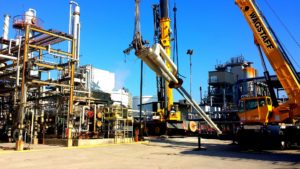Lanyard Caught in Kelly Results in Fatality

The following is a real-life example of what went wrong and what corrective measures resulted from an incident in the oil and gas industry. It’s taken from the Safety Alerts issued by the International Association of Drilling Contractors and the Canadian Petroleum Safety Council.
WHAT HAPPENED:
A rig worker was fatally injured after his six-foot (1.8-meter) lanyard was wrapped around the Kelly bar. The daylight crew was in the process of drilling surface hole. A cable used during slip and cut operations had become unsecured and was hanging inside the derrick. The motorman volunteered to secure the cable to the derrick girt. The worker was wearing a full body harness with the rope lanyard attached to his shock absorber.
The driller, standing at his controls, watched the worker complete the task. The rotary table was slowed down as the worker was positioned at the girt. Once the worker completed the task the driller resumed rotating at 130 revolutions per minute. As the worker climbed down the derrick ladder the driller walked across the floor to adjust his weight indicator. The motorman walked across the rig floor toward the driller positioned at the weight indicator (mud tank side of the floor or off-driller’s side).
The driller heard the motorman speak and turned toward the rotary table. The motorman stood on the corner of the rotary table (mud tank side), his lanyard wrapped around the rotating Kelly bar. The lanyard was floating around the Kelly bar but did not grab. The driller immediately ran to the driller console, the inertia brake was engaged and both clutches for the drawworks kicked out. The driller witnessed the lanyard tighten to the Kelly bar and the motorman get pulled into the bushing. The rotary table was turning at approximately 130 RPM.
CORRECTIVE ACTION:
To address this incident, the company instructed rig supervisors and personnel in the following:
- Identify and enforce clear standards associated to working around the rotary table. To assist this process, complete an individual hazard assessment clearly identifying danger zones (distances) and compliance measures.
- Identify, document, train and enforce clear standards associated to use of fall protection equipment in and around rotating equipment.
- Work with fall protection training agencies to ensure that procedures for wearing fall protection will address hazards associated with high-speed moving components.